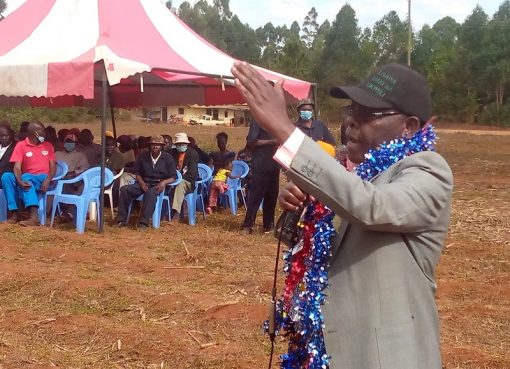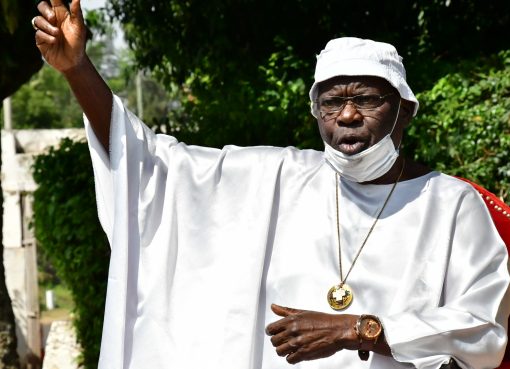An environmental conservation group in Kipsaina area in Trans Nzoia east sub-county has launched efforts to conserve the Kipsaina River which is the life stream for the endangered Sitatunga antelopes at the Kipsaina National Park.
The Kipsaina crown cranes and wetland conservation group has already issued 200 farmers with indigenous tree seedlings to boost the venture.
Each of the farmers whose farms are adjacent to the stream received 100 indigenous trees to plant on the river banks as one of the ways to prevent soil erosion along the river bank.
“After being bestowed the Disney conservation hero I decided to give back the same measure to the community by planting seedlings which I am distributing free to the farmers in my area,” said the group’s director Mr. Wanjala Sitoko.
He said his organization together with other environmental organizations including the International crane’s foundation; endangered world life trust and Community Action for Nature Conservation have seen the importance of working with the government institutions including the Ministry of interior for the protection of the wetland areas, the National Environment Authority (NEMA), Water Resources Management Authority (WARMA), the county government among others with an aim of planting indigenous trees during the rainy season to enhance tree cover.
Wanjala added that apart from the conservation of River Kipsaina, the indigenous trees can also be part of the tourist attraction hence boosting the tourism sector in the area.
“Apart from my passion for environmental and wildlife conservation, I am looking forward to developing and investing in setting up a research center in this place because we have very many students taking environmental courses like environmental science and botany so it will be very difficult for them to find a place to do practicals so this place will serve them well in their studies,” Wanjala said.
He encouraged farmers whose farms go up to River Kipsaina to ensure they plant trees in order to maintain and conserve the river banks urging them to desist from cultivating and grazing their animals up to the river banks saying this will reduce the water pollution through the use of farm chemicals and the river banks’ degradation.
He also plans to call for a stakeholders meeting to train farmers on beekeeping, calling on farmers that their farms go up to the rivers to ensure that they start venturing into beekeeping because the bees do well near the water sources since the honey market is lucrative.
Wanjala warned the residents against selling or leaving the trees to be eaten by grazing animals urging the members who benefitted to ensure that they keep the record of the tree and that when one tree fails to grow, they should seek replacements.
His sentiment was echoed by Kipsaina area Chief Samson Kago, who said the Interior ministry will make sure the residents support the initiative of conserving River Kipsaina by planting trees and ensuring they grow.
Kago also assured the organizations in collaboration with other government entities including the county government ministry of environment, NEMA, and WARMA in enforcing the law on the conservation of the riparian land including the river banks and sand harvesting from the river banks
The area chief also added that the national government is partnering with non-governmental organizations and other state actors in ensuring the increase of forest cover in the country through the planting of indigenous trees, saying the initiative is a welcome idea and has full government support.
By Kosuri Valarie





